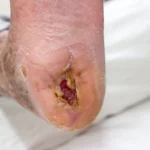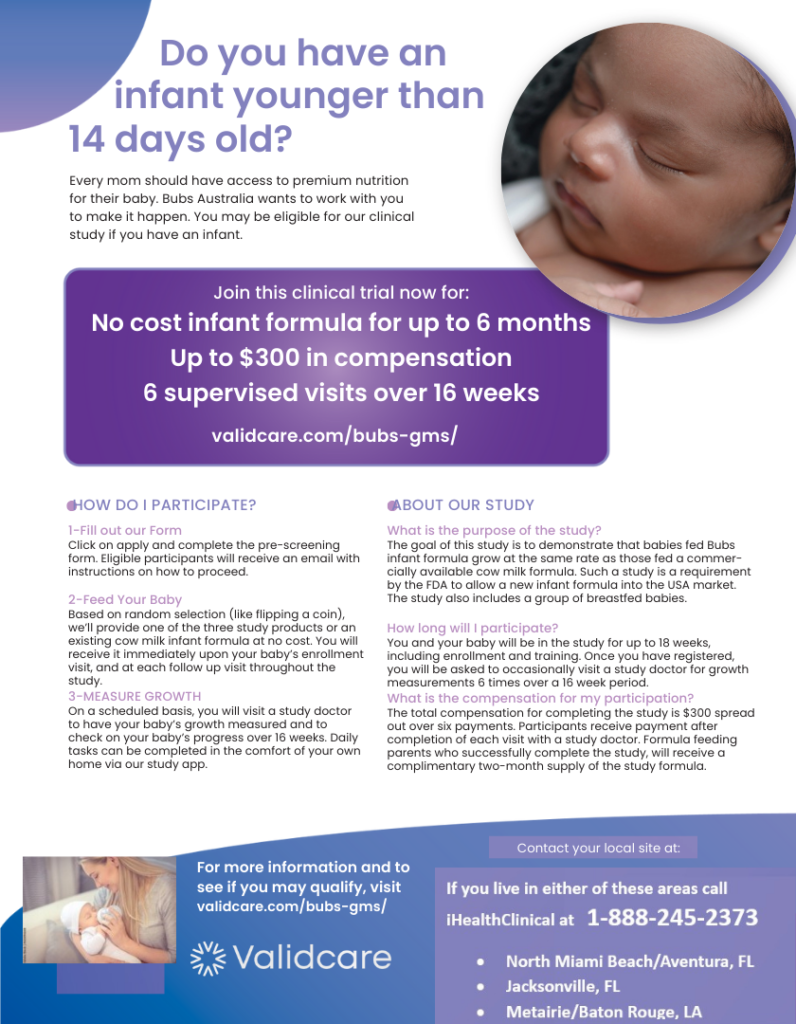The Transformative Role of AI in Clinical Trials
Mar 22, 2025Navigating Greek Life in College with Type 1
Jan 15, 2025The Awesomeness of the Patient Professor Academy
Dec 23, 2024Giving Thanks
Nov 23, 2024Understanding the Financial Burden of Diabetic Foot Ulcers, by Alton Johnson DPM
- Alton R. Johnson Jr., DPM
- 5 Minutes Read Time
Foot ulcers are open sores or lesions that can lead to the necessity for a foot amputation. Among people living with diabetes, slight foot cuts and scrapes can quickly progress to developing a foot ulcer. According to a research article in Diabetes Care, up to 34% of all adults living with diabetes in the US develop a foot ulcer during their lives (1). Meanwhile, the persistently increasing national cost-burden for diabetes medical care in the US totaled $412.9 Billion in 2022, per the American Diabetes Association (2). Notably, the annual US cost-burden for diabetic foot care per patient is at least $8,569, and this cost tremendously increases for diabetics who have foot ulcers (3).

Why Diabetes Increases the Risk for Foot Ulcers
Diabetes heightens the risk of a circulatory disorder called Peripheral Artery Disease (PAD), which is featured by decreased blood flow in the legs and feet. Around one-third of all adults with diabetes older than age 50 are afflicted with PAD (4). Furthermore, diabetics often experience peripheral neuropathy, which can lessen sensation to pain, heat, and cold in the feet. Not only do these complications of diabetes increase the risk of a cut or scrape in the foot, but they can result in a non-healing one. Indeed, an American Family Physician article included the following as among the primary causes of non-healing cuts or scrapes progressing to ulceration (5):
- Peripheral neuropathy (nerve damage);
- Traumatic foot injury;
- High plantar pressures;
- PAD

The Link Between Skin Ulcers of the Foot and Infection
It is important to recognize that bacteria live on the skin, and bacterial spread into underlying tissues is more likely to occur in non-healing wounds. Thus, the risk for an infected foot ulcer is increased in diabetics. Furthermore, an infected foot ulcer can progress to gangrene (below-the-skin tissue death), and this can necessitate a life-saving foot amputation. More than 50% of foot ulcers are infected by diagnosis, and recent study findings concluded that only 44.5% of diagnosed infected foot ulcers had healed by 12 months following initial diagnosis (6). After 12 months of foot ulcer existence, study findings showed a strong correlation with a required foot amputation (7).
Infected Foot Ulcers, Amputations, and Medical Care Financial Burden
Nearly 96% of all foot amputations in diabetics are due to infected foot ulcers, and foot ulcers are also a major reason for hospitalization in people with diabetes (8). Since hospitalization is associated with the highest financial burden on the US health system (as well as individual patients), medical care linked to preventable diabetic foot ulcers creates a definite financial burden. As noted in an article in the Annals of Vascular Surgery, diabetes increases the incidence of foot ulcer hospital admissions by a whopping 11-fold (9).
How Do You Prevent a Foot Ulcer?
The following are four Centers for Disease Control (CDC) recommended measures aimed at people with diabetes to prevent developing a foot ulcer (10):
- Check your feet every day for cuts, redness, blisters, or sores;
- Never go barefoot;
- Wear shoes that fit well (to prevent a pressure sore from developing);
- Wash your feet every day and apply lotion to the top and bottom of each foot
Whether you have Type-1 diabetes, Type-2 diabetes, or a different form of diabetes, using a Lavior diabetic skin cream can aid in healing cuts and scratches to prevent developing a foot ulcer. Lavior also offers diverse other diabetic skincare products, such as a diabetic first aid gel and diabetic hydrogel wound dressing.
References:
- McDermott K, Fang M, Boulton AJM, et al. (2023). Etiology, Epidemiology, and Disparities in the Burden of Diabetic Foot Ulcers. Diabetes Care 46(1): 209–221. Webpage: https://diabetesjournals.org/care/article/46/1/209/148198/Etiology-Epidemiology-and-Disparities-in-the
- American Diabetes Association (ADA). (November 1, 2023). New American Diabetes Association Report Finds Annual Costs of Diabetes to be $412.9 Billion. Webpage: https://diabetes.org/newsroom/press-releases/new-american-diabetes-association-report-finds-annual-costs-diabetes-be
- Raghav A, Khan ZA, Labala RK, et al. (2018). Financial burden of diabetic foot ulcers to world: A progressive topic to discuss always. Therapeutic Advances in Endocrinology and Metabolism 9(1): 29–31. Webpage: https://www.ncbi.nlm.nih.gov/pmc/articles/PMC5761954/
- UCLA Health [University of California Medical Center, Los Angeles, CA]. How to improve blood circulation if you have type 2 diabetes. Webpage: https://www.uclahealth.org/news/how-to-improve-blood-circulation-if-you-have-type-2-diabetes#:~:text=Peripheral%20artery%20disease%20(PAD)%20produces,older%20than%2050%20have%20PAD.
- Frykberg RG. (2002). Diabetic Foot Ulcers: Pathogenesis and Management. American Family Physician 66(9): 1665–1663. Webpage: https://www.aafp.org/pubs/afp/issues/2002/1101/p1655.html
- Ndosi M, Wright-Hughes A, Brown S, et al. (2018). Prognosis of the infected diabetic foot ulcer: A 12-month prospective observational study. Diabetic Medicine 35(1): 78–88. Webpage: https://www.ncbi.nlm.nih.gov/pmc/articles/PMC5765512/
- Ndosi M, Wright-Hughes A, Brown S, et al. (2018). Prognosis of the infected diabetic foot ulcer: A 12-month prospective observational study. Diabetic Medicine 35(1): 78–88. Webpage: https://www.ncbi.nlm.nih.gov/pmc/articles/PMC5765512/
- Hicks CW, Selvarajah S, Mathioudakis N, et al. (2016). Burden of Infected Diabetic Foot Ulcers on Hospital Admissions and Costs. Annals of Vascular Surgery 33 (P149–158). Webpage: https://www.annalsofvascularsurgery.com/article/S0890-5096(16)30059-0/abstract
- Hicks CW, Selvarajah S, Mathioudakis N, et al. (2016). Burden of Infected Diabetic Foot Ulcers on Hospital Admissions and Costs. Annals of Vascular Surgery 33 (P149–158). Webpage: https://www.annalsofvascularsurgery.com/article/S0890-5096(16)30059-0/abstract
- Centers for Disease Control (CDC). Diabetes and Your Feet. Webpage: https://www.cdc.gov/diabetes/library/features/healthy-feet.html

Alton R. Johnson Jr., DPM is currently a Clinical Assistant Professor of Orthopaedic Surgery-Foot and Ankle. Founder and CEO of AJ Educational Empowerment. In 2012, he attended the Kent State University College of Podiatric Medicine, Doctor of Podiatric Medicine. In addition, as a podiatric medical student Dr. Johnson presented several research posters focused on geriatric fall secondary to foot deformities. In 2020, Dr. Johnson was bestowed the American Board of Wound Management Foundation Scholarship and selected as the only podiatric clinical investigator in the nation for the 2020 National Institutes of Health/National Medical Association Academic Medicine Fellows Program. In 2021, Dr. Johnson completed a two-year ACFAS Podiatric Medicine and Surgery Clinical Research Fellowship and two-year Clinical Research Post-Doctoral Clinical Research Certification at the University Pennsylvania-Penn Presbyterian Medical Center in Philadelphia, PA. His research emphasis has been focused on gerontology, tropical and international medicine, regenerative medicine, wound care, diabetic limb preservation techniques, rare dermatological and bone pathologies, biomedical technology, and advanced durable medical equipment technology.

















